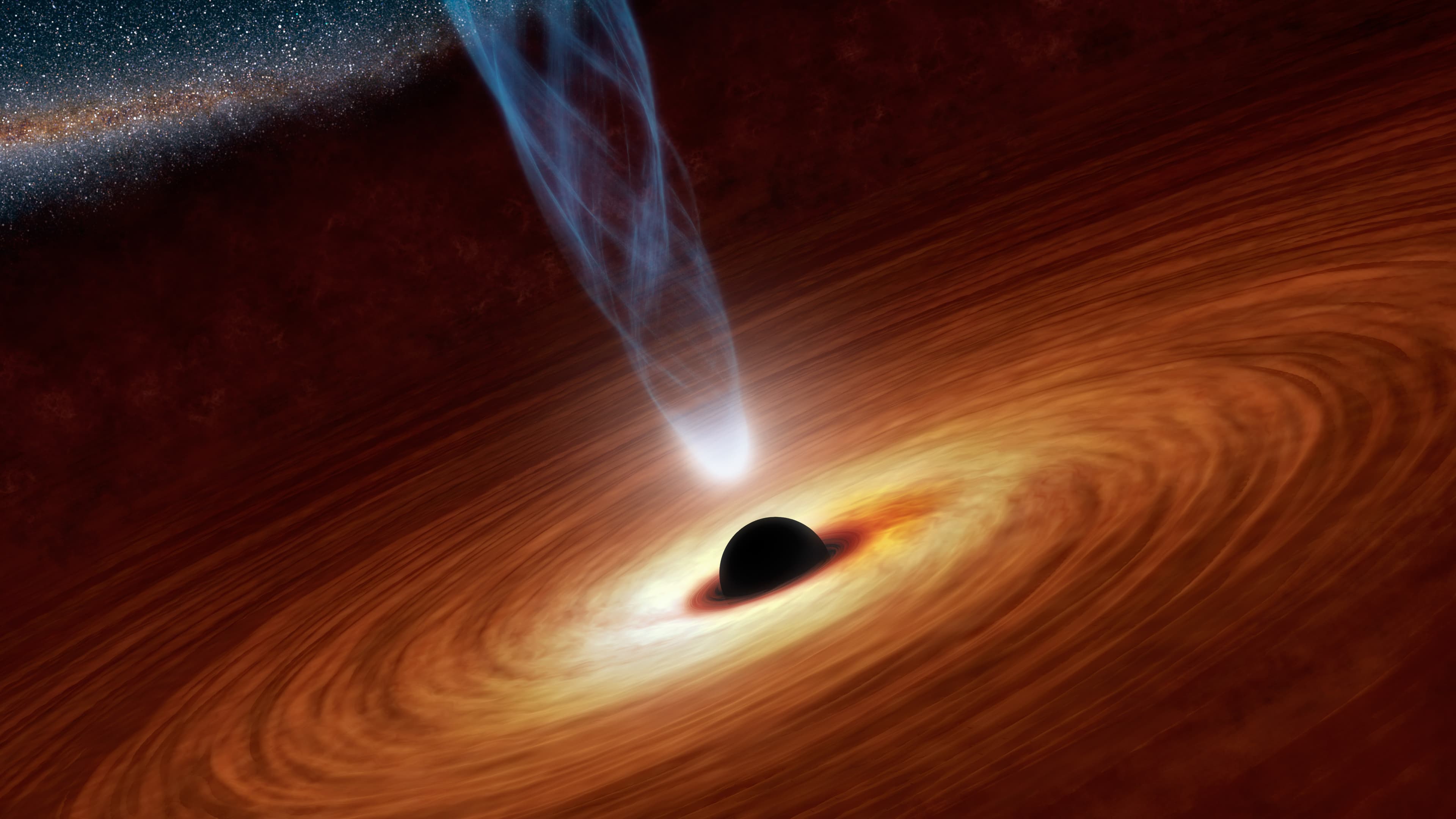HOW HOT (OR COLD) IS A BLACK HOLE?
JUDY, LLANDRILLO
Short Answer – the temperature of a black hole is inversely proportional to its mass. For a black hole with the same mass as our Sun, the temperature is 60 billionths of a degree kelvin.
Long Answer
Black holes are objects that have an escape velocity greater than the speed of light. And since nothing is faster than the speed of light, nothing can escape a black hole (no matter what Christopher Nolan’s views of love are). With the term black hole, we indicate an area of the Universe enclosed by an event horizon. The event horizon is the surface of the black hole, the last position where light can escape.
I hope all of that was clear and straightforward because now things get interesting. Let me say this again: nothing can escape a black hole. Once you cross the event horizon, it’s goodbye Universe. Unless, of course, you’re a subatomic particle.
The escape of particles has to do with the laws of quantum mechanics, and the process was given a theoretical justification by Stephen Hawking in 1974. It shouldn’t come as a surprise that this phenomenon is called Hawking radiation.
Everywhere in space you can have spontaneous production of a pair of particle-antiparticle as long as their existence is brief enough to not violate Heisenberg’s Uncertainty Principle. In simple terms the smaller the particles’ mass the longer they can exist. These particles are called virtual particles. And the creation of these pairs is known as ‘vacuum fluctuation’. Due to the strong gravitational field around a black hole, we expect an increase in both the creation of these particles and their sizes.
Now, when these fluctuations happen around the event horizon two things might happen:
The particles are created outside the event horizon, one will move towards the black hole and the other away from it
The particles are created inside the event horizon, one will quantum tunnel out of the event horizon, and the other will remain trapped inside it
Both scenarios are plausible, and there is much debate on which one, if either, is more correct. The net result from this is the emission of particles, and hence mass loss, from the inescapable black hole.
This radiation is not completely analogous to the classical thermal radiation, while thermal radiation contains information about the object that emits it, Hawking radiation only depends on the mass, angular momentum and charge of the black hole. This is the so-called No-Hair conjecture: all information about the matter that fell into the black hole is lost after it crosses the event horizon.
The formula for the temperature of a black hole is:
where
is the Dirac constant, c is the speed of light, kB is the Boltzmann constant, G is the gravitational constant, M is the Mass of the black hole and
is the mass of the Sun.
This has important consequences: the bigger the black hole the colder it is, and thus the slower it loses mass.
When it comes to black holes size does indeed matter.

